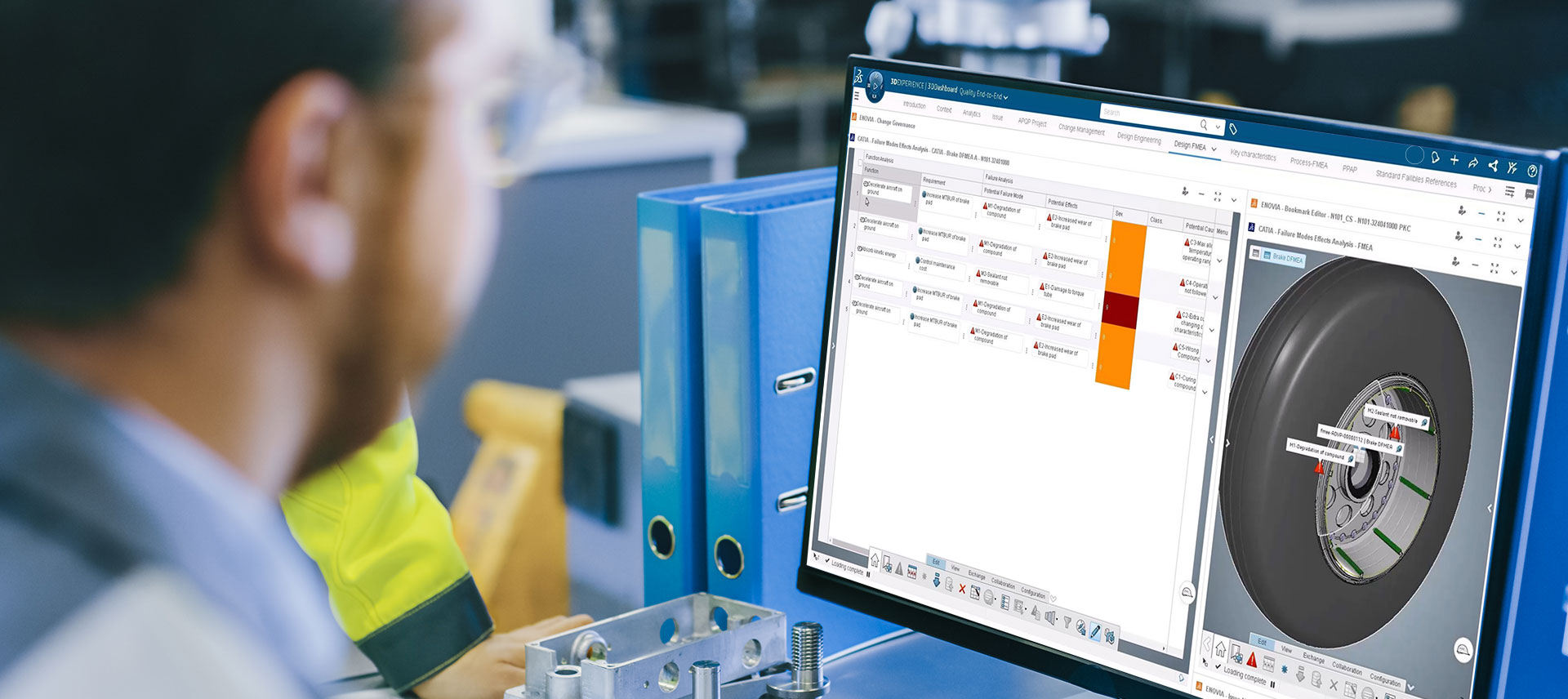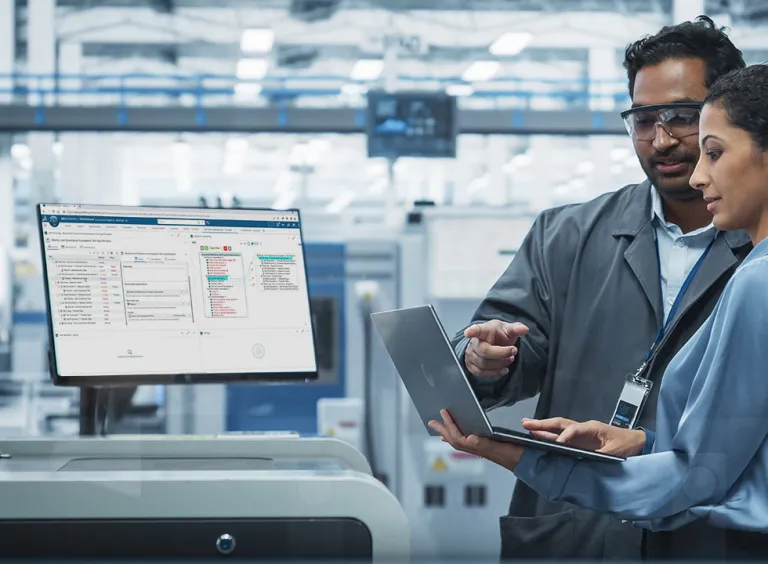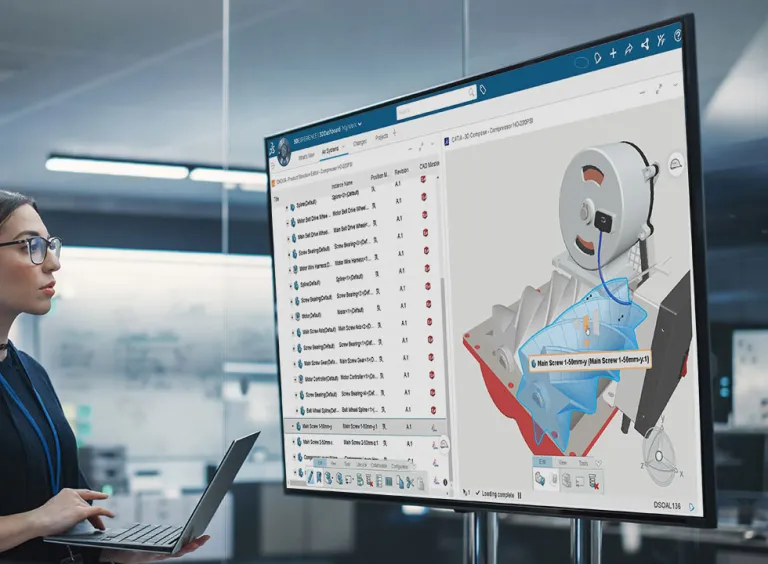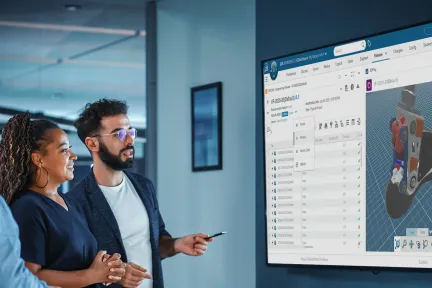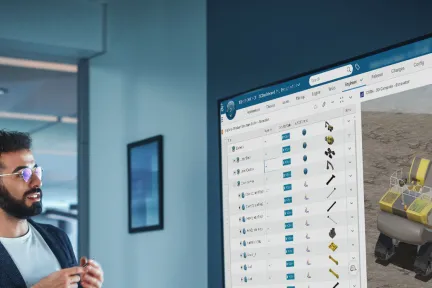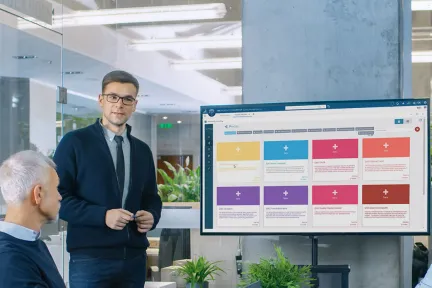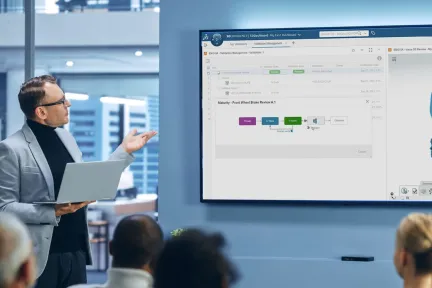Requirements Management
Ensure stakeholder alignment by capturing, analyzing and tracking project needs throughout the development lifecycle
What is Requirements Management?
Requirements management is the process of systematically capturing, analyzing, documenting and tracking project needs to ensure they align with expectations and are effectively implemented throughout the product development lifecycle. It helps prevent scope creep, miscommunication and missed objectives by maintaining clear and organized requirements. This process is essential for delivering successful projects that meet both business goals and user needs.
The Importance of Traceability and Collaboration
Requirements management ensures traceability throughout the product development lifecycle by tracking changes, assessing their impact and ensuring all requirements are met as the project evolves. This fosters transparency and adaptability, enabling teams to respond effectively to shifting priorities or unforeseen challenges. Beyond just tracking, it promotes collaboration between stakeholders, project managers and development teams, creating a shared understanding of project goals. By validating and prioritizing requirements, organizations can focus on delivering critical features while reducing risks. A systematic approach enhances communication, improves efficiency and ensures high-quality deliverables that meet both user needs and business objectives.
Dassault Systèmes' Approach to Requirements Management
The 3DEXPERIENCE platform integrates requirements management directly into the product development process. This ensures that all stakeholders—from design to engineering—have real-time access to a single source of truth for project data. By connecting requirements with design, simulation and validation processes, the 3DEXPERIENCE platform enables teams to collaborate more effectively, reduce errors and ensure products meet both regulatory standards and customer expectations. This holistic approach enhances traceability, fosters innovation and accelerates time-to-market.
Core Pillars of Requirements Management
Capture and Documentation
Accurately gathering and documenting stakeholder needs to create a clear foundation for the project.
Analysis and Validation
Ensuring requirements are feasible, aligned with business goals and meet stakeholder expectations.
Traceability
Tracking requirements throughout the project lifecycle to assess changes and ensure alignment with objectives.
Collaboration and Communication
Promoting effective communication among stakeholders and teams to maintain a shared understanding of project goals.
Sustainability and Requirements Management
Driving Sustainable Product Development
Requirements management solutions play a crucial role in driving sustainable and eco-friendly product development. By incorporating sustainability requirements early in the development process, organizations ensure environmental considerations are integrated throughout all stages of product design. Requirements management tools help track and trace sustainability goals, ensuring that eco-friendly objectives are met.
Use Cases: Requirements Management
Agile Product Development
In agile environments, requirements management supports iterative development by maintaining a backlog of prioritized requirements, enabling sprint planning, execution and continuous stakeholder feedback integration.
Regulatory Compliance in Highly Regulated Industries
In industry sectors like aerospace and medical devices, requirements management tool ensures compliance by documenting and tracing requirements to regulatory mandates, providing a clear audit trail for approvals and regulatory changes.
Complex System Engineering
In industrial equipment and automotive engineering, requirements management solution tracks interdependencies between subsystems, ensuring system integrity and compliance with industry standards and regulations.
Software Development Projects
In software development, requirements management translates user needs into development tasks, helping teams prioritize features, manage changes, and ensure traceability between requirements and code. This is essential in agile software development environments where requirements evolve rapidly.
Key Features of Requirements Management
Enhancing Product Development on the 3DEXPERIENCE Platform with the Requirements Engineer Role
The Requirements Engineer role from ENOVIA minimizes product failures by adopting a requirements-driven development approach. It refines global requirements management by capturing the "voice of the customer" and converting it into detailed specifications that guide product development. With a centralized repository, it ensures efficient management of customer needs, product requirements and configurations, seamlessly connecting design, development and launch.
Requirements Engineer helps companies comply with industry standards and reduce development costs by aligning product requirements with the design-to-launch workflow. It enhances team communication and collaboration through a shared platform while strengthening quality and traceability throughout the requirements lifecycle. By capturing customer insights and maintaining a centralized repository, it simplifies change management, improves impact analysis and ensures effective implementation tracking, driving innovation and market success.
Customer Stories
ENOVIA's requirement management solutions have been successfully implemented across various industries, delivering tangible benefits to customers.
Clarion Malaysia
Clarion Malaysia isn’t just keeping up with the latest technology; it’s thinking ahead. Today, the company manages product changes with ENOVIA, ensuring production data is synchronized with the latest design updates. With multiple engineers working on each project, ENOVIA’s governance tools make sure that all team members work with the most current version of a part, reducing costly rework.
With enough data, I will know where my bottleneck is, where the integration of automation is going to start, and how to plan the whole process. We will be working with Dassault Systèmes to leverage model-based systems engineering (MBSE), AI and virtual twin technology to its fullest potential.
Requirements Management & Virtual Twin
Enhancing Digital Product Development
The integration of requirements management with virtual twin technology is revolutionizing digital product development. Virtual twins, which are digital representations of physical products, allow teams to simulate and test products in virtual environments. By linking requirements directly to these virtual models, developers can seamlessly validate design decisions against specified requirements. It also facilitates better collaboration between design, engineering and testing teams, as all stakeholders can visualize and interact with the product's virtual representation while tracking requirement fulfillment.
Want to Learn More?
Explore the content below to learn more about Requirements Management.
FAQs on Requirements Management
Also Discover
Learn What ENOVIA Can Do For You
Speak with an ENOVIA expert to learn how our solutions enable seamless collaboration and sustainable innovation at organizations of every size.
Get Started
Courses and classes are available for students, academia, professionals and companies. Find the right ENOVIA training for you.
Get Help
Find information on software & hardware certification, software downloads, user documentation, support contact and services offering.
